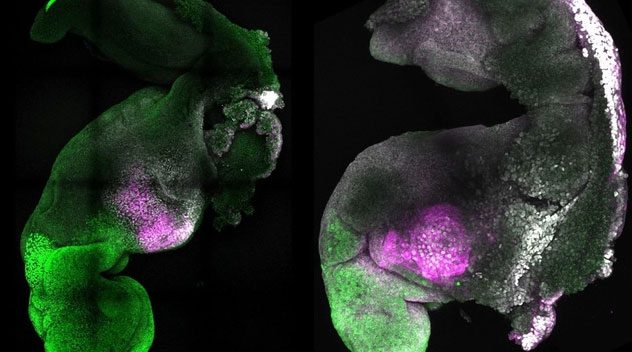A research team from the UK and the US has created “synthetic” mouse embryos that continue to develop brain, nerve, and beating heart tissues in the laboratory.
This “synthetic” mouse embryo does not require fertilized eggs or a uterus to develop.
The results of this experiment are similar to a breakthrough in research by a team of scientists in Israel, published earlier this August.
If applied to human embryos, this research could provide a better understanding of human reproductive capabilities, developmental disorders, and offer new directions for developing tissues or organs for laboratory-grown transplants.
However, applying this technique to human embryos raises ethical and legal issues.
“The big question we are addressing in the lab is how do we start our lives?” said Professor Magdalena Zernicka-Goetz from Caltech in Pasadena, California, and the University of Cambridge in the UK.
To create the synthetic embryo, or “blastocyst,” scientists extracted three types of stem cells from mouse embryos that would typically give rise to all the necessary tissues in a developing embryo.
They then transferred these cells into an artificial growth environment, essentially a rotating nutrient vessel. The stem cells continued to form a spontaneously developing embryo.

Natural and synthetic embryos placed side by side. (Photo: Amadei and Handford).
Only about one in 100 embryos was successful, but a few “were indistinguishable in many cases from natural embryos.” Professor Zernicka-Goetz noted.
The embryos only developed for 8.5 days, roughly half the normal gestation period for a mouse.
This technique remains significant as a method for producing early embryos to study early development without the need for live animal subjects.
The research team is currently actively working on a model for human embryos. In fact, there are significant differences between the early development of mouse embryos and human embryos.
However, having a synthetic human embryo could represent a major advancement in research on reproductive capabilities and common developmental disorders.
Human embryo supplies are scarce and often of poor quality. Therefore, the “model” embryos developed in the lab could help answer many questions.
The research team is proposing that synthetic embryos recreate only one aspect of early human embryos, such as the heart or tissues that form the placenta during implantation.


















































